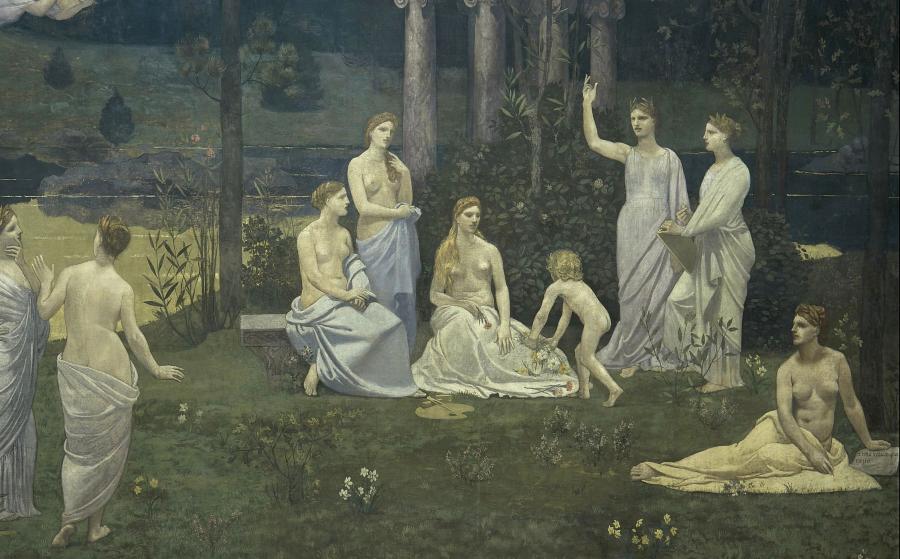The Sacred Grove, Beloved of the Arts and Muses
Information sur l’artiste
Pierre Puvis de Chavannes [Lyon, 1824 - Paris, 1898]

Le Bois sacré cher aux arts et aux muses, 1884.
Image © Lyon MBA - Photo G. Dufrene
In the early 1880s, the City of Lyon entrusted the decoration for the monumental staircase newly constructed in the south-east corner of the Palais Saint-Pierre to Pierre Puvis de Chavannes. These four compositions, painted on canvas in the studio, then mounted in their final positions in situ, make up one of the finest decorative ensembles the artist ever created, and one of the most significant works of the late 19th century.
As is always the case with Puvis de Chavannes, the overall meaning of the piece is carefully thought through. In the centre, in the crepuscular atmosphere of the Sacred Grove, the nine muses are depicted in contemplation and conversation, reclining, sitting, standing, or flying in the calm evening light. The three allegories of Architecture, Sculpture, and Painting stand before a fragment of an ancient portico. The Sacred Grove is Art's timeless utopia.
The composition on the left, Antique Vision, proclaims a perfect, radiant vision of early Greece. On the right, Christian Inspiration sets the artist's creative activity against the idle serenity of pagan Antiquity, in a scene set in an Italian convent in the late Middle Ages or early Renaissance. Both Antique Vision and Christian Inspiration are images of Art personified: on one side life and nature in the mythical golden age of pagan Antiquity, on the other works which are the fruit of man's creative act and religious feeling in the modern Christian era.
1884
Mounted oil on canvas
H. 460; L. 1040 cm
Commissioned with support from the French government in 1883
Inv. B 355





